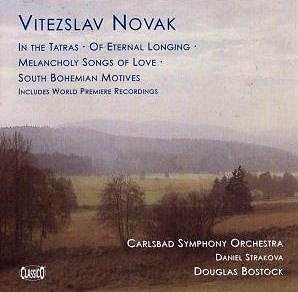 Composer: Joseph Guy Ropartz
Composer: Joseph Guy Ropartz
Works: Petite Symphonie (1943), Pastorales (1950), Sons de Cloches (1913), Sérénade Champêtre (1932), Divertimento (1947/8)
Performers: Orchestre de Bretagne, Pascal Verrot (conductor)
Recording: Quartz, Brest, October 1995
Label: Timpani
Joseph Guy Ropartz, a prominent figure in the French music scene of the early 20th century, exemplifies the tension between tradition and modernity that marked his era. His compositions reflect a deep-rooted affinity for the melodic and harmonic language of his predecessors while simultaneously grappling with the rapidly evolving landscape of classical music. This Timpani release offers a selection of Ropartz’s works that, while pleasant and aesthetically engaging, ultimately reveal the limitations of his artistic vision in the face of more innovative contemporaries.
The performance by the Orchestre de Bretagne under Pascal Verrot exhibits a commendable balance of delicacy and vigor, particularly in the orchestral textures that Ropartz employs. The chamber-like scoring lends an airy quality to the music, which is particularly effective in the Pastorales and the Petite Symphonie. The woodwinds shine in these pieces, showcasing their lyrical capabilities; however, one often finds oneself yearning for the depth and complexity that characterize the works of Ravel or Poulenc. For instance, in the Pastorales, the modal melodies evoke a sense of pastoral charm, yet they remain mere echoes of the rich harmonic explorations found in Ravel’s oeuvre.
The recording quality is somewhat dry, with a close balance that creates a slightly boxy acoustic environment. While the performances are technically proficient, this sonic environment does not fully capture the vibrant colors of Ropartz’s orchestration. In the Divertimento, the final animato section offers a spirited conclusion, but the energy conveyed seems stifled by the recording’s limitations. The engineering choices do not serve the music’s inherent vivacity as effectively as one might hope, leading to a less impactful listening experience.
Ropartz’s works, particularly the Sérénade Champêtre, flirt with the pastoral and the nostalgic, recalling the late Romantic idiom. Yet, the listener is continually reminded of greater masterpieces that inhabit similar thematic territory. The echoes of Richard Strauss’s Oboe Concerto and Ravel’s Le Tombeau de Couperin linger, underscoring a sense of familiarity that borders on derivative. While the performances are engaging, they lack the spark of discovery that would elevate Ropartz’s music beyond its pleasant surface.
The liner notes, while attempting to position Ropartz as a significant figure in 20th-century music, may overstate his case. The charm and diverting quality of his music do not necessarily translate into a lasting impact or memorability. For those with a keen interest in French repertoire or the exploration of lesser-known composers, this disc may offer a satisfying, albeit fleeting, diversion. Ultimately, while Ropartz’s compositions provide a glimpse into a bygone era of French music, they do not invite the listener into the profound emotional or intellectual depths found in the works of his more celebrated contemporaries.



